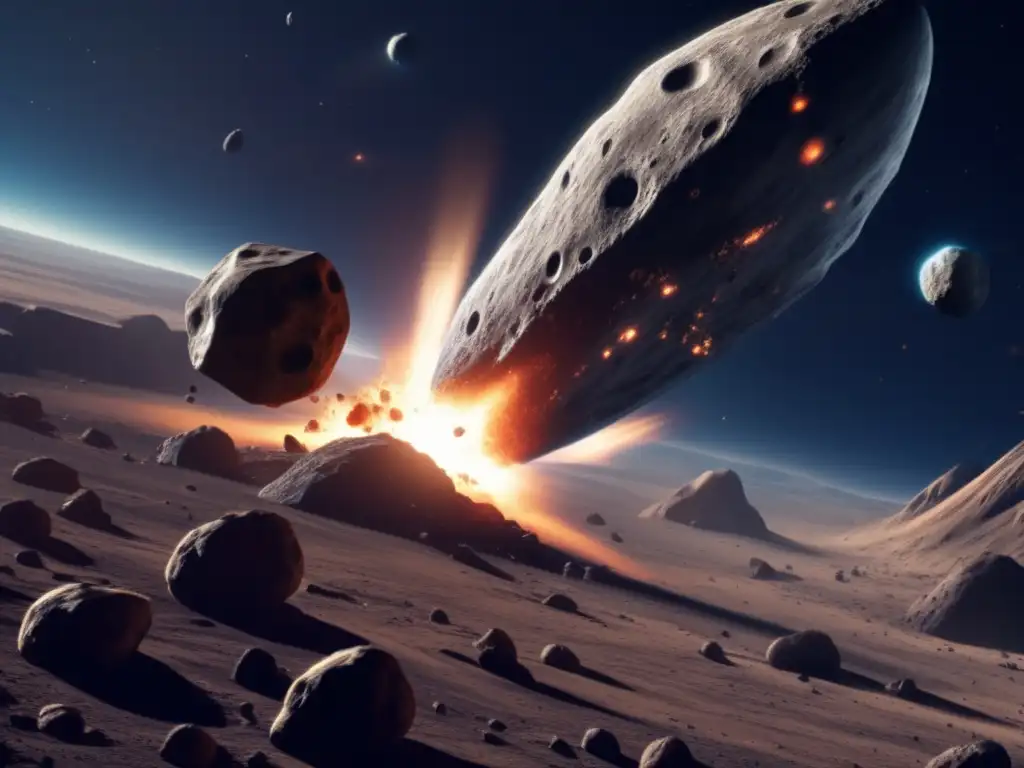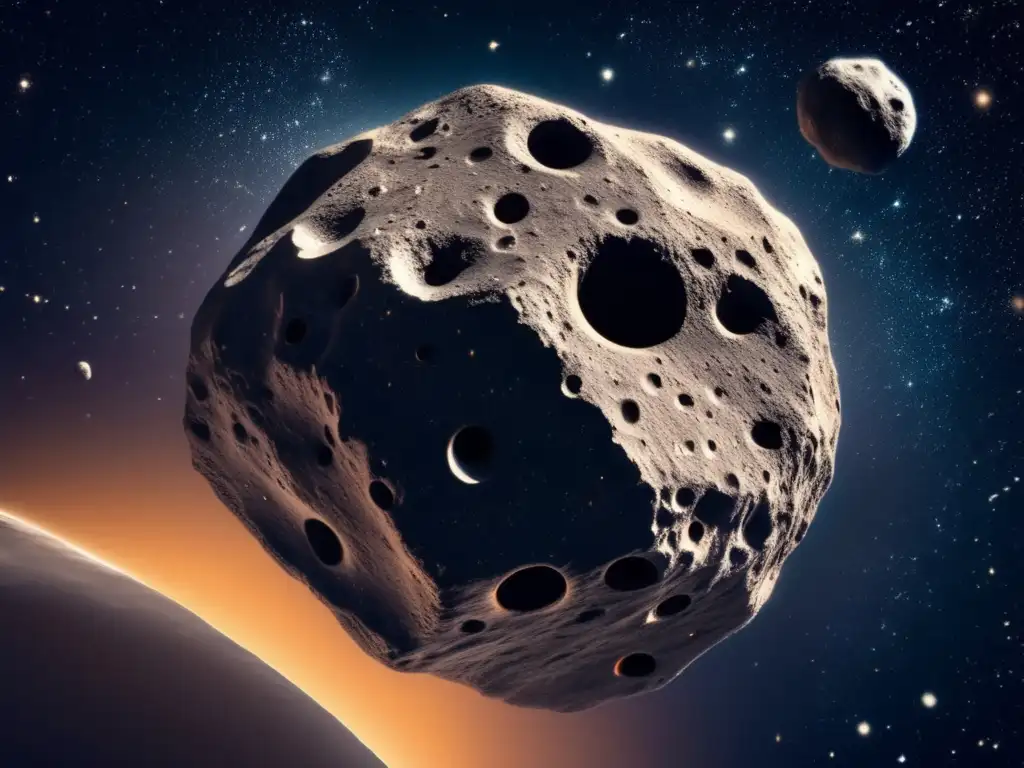Avoiding The Big Bang: Tools For Preventing Asteroid Collisions

Introduction
As we continue to explore the cosmos, we find ourselves facing a daunting and dangerous threat from asteroids. These celestial bodies hold the potential to cause significant damage to our planet if they collide with it. To prevent such a scenario, various tools and methods have been developed for detecting and deflecting asteroids towards safer trajectories.
The Importance of Planetary Defense

How Common are Asteroid Collisions?
Asteroid collisions are rare, but they do happen. The most well-known and catastrophic example is the Chicxulub impact, which is believed to have caused the extinction of the dinosaurs. However, smaller asteroid impacts occur more frequently, with the most recent being the 2013 Chelyabinsk meteor over Russia. This event injured thousands and damaged buildings across the region.
Why is Planetary Defense Important?
While the probability of an asteroid collision is low, the potential consequences are so severe that planetary defense must be taken seriously. The destruction caused by an asteroid impact could be catastrophic, causing widespread damage, loss of life, and long-term economic effects. Fortunately, we have advanced technology and innovative solutions to help us prevent such a disaster.
The Challenges of Planetary Defense
One of the main challenges of planetary defense is detecting an incoming asteroid early enough to take effective action. With the vastness of space and the speed at which asteroids travel, detecting a potential threat requires both advanced technology and a network of telescopes and observatories working together.
Detection of Asteroids
NASA's NEO Observations Program
NASA's Near-Earth Object Observations Program is one of the leading programs for detecting and tracking asteroids. The program uses a network of telescopes around the world, including the Hubble Space Telescope, to monitor potentially hazardous asteroids and comets that come within 30 million miles of Earth's orbit.
Ground-based Observatories
Many ground-based observatories around the world also contribute to the detection and tracking of asteroids. These observatories use advanced telescopes and cameras to scan the skies and identify potential threats. The Catalina Sky Survey in Arizona, for example, has discovered over 8,000 near-Earth objects to date.
Space-based Telescopes
Space-based telescopes, like the European Space Agency's Gaia satellite, are also powerful tools for detecting and tracking asteroids. Gaia is capable of measuring the positions, distances, and motions of over one billion stars, as well as identifying nearby asteroids and comets.
Deflection of Asteroids

Kinetic Impactors
The most commonly discussed method of deflecting an asteroid is using a kinetic impactor. This involves sending a spacecraft to collide with the asteroid at high speed, effectively pushing it off course. NASA's Double Asteroid Redirection Test (DART) mission is set to demonstrate this concept by targeting the asteroid Didymos' moon, which orbits the larger asteroid.
Nuclear Explosives
Another proposed method for deflecting an asteroid is using nuclear explosives. This method involves detonating a nuclear device near the asteroid to alter its trajectory. While this method has been discussed, it has never been tested and raises concerns about the risk of creating more debris and hazardous materials.
Gravity Tractors
Gravity tractors are a newer method for deflecting asteroids. This technique involves using a spacecraft to gradually change the asteroid's trajectory by applying a small gravitational force over time. NASA's proposed Asteroid Redirect Mission would use this technique to redirect an asteroid to orbit the moon, where it could be studied and potentially mined for resources.
Conclusion
While the risk of an asteroid collision with Earth is low, the potential consequences are catastrophic. Planetary defense is vital to protecting our planet and ensuring the safety of future generations. Fortunately, we have various tools and methods for detecting and deflecting asteroids, and ongoing research and innovation will continue to improve our ability to defend ourselves against these cosmic threats.
Frequently Asked Questions

-
What is the most significant asteroid impact in history?
The Chicxulub impact is the most significant asteroid impact in history, causing the extinction of the dinosaurs.
-
What is the likelihood of an asteroid collision with Earth?
The likelihood of an asteroid collision with Earth is very low but not impossible. The probability of such an event depends on various factors, including the size and trajectory of the asteroid.
-
What is NASA's mission to deflect an asteroid?
NASA's Double Asteroid Redirection Test (DART) mission aims to demonstrate the concept of deflecting an asteroid using a kinetic impactor.
-
What are the challenges of detecting an incoming asteroid?
The vastness of space and the speed at which asteroids travel make detecting an incoming asteroid challenging. Effective detection requires advanced technology and a network of telescopes and observatories working together.
-
What is the role of space-based telescopes in detecting asteroids?
Space-based telescopes, like the Gaia satellite, are powerful tools for detecting and tracking asteroids. They can measure positions, distances, and motions more accurately than ground-based observatories.
Additional Resources

For those interested in planetary defense and asteroid detection and deflection, check out the following resources:
- NASA's Planetary Defense website
- Center for Near-Earth Object Studies (CNEOS)
- European Space Agency's Near-Earth Objects page
 Asteroid Showdown: Techniques For Planetary Defense
Asteroid Showdown: Techniques For Planetary Defense Guarding The Galaxy: How We Shield Earth From Asteroids
Guarding The Galaxy: How We Shield Earth From Asteroids Asteroid Avengers: Current Techniques In Planetary Defense
Asteroid Avengers: Current Techniques In Planetary DefenseIf you want to discover more articles similar to Avoiding The Big Bang: Tools For Preventing Asteroid Collisions, you can visit the Planetary Defense category.
Leave a Reply

Articulos relacionados: